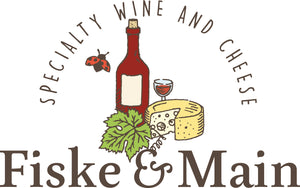$63.00
$75.00
Exploration 4-Pack: Think Pink: A World Tour of Rosés
It is always interesting to try different wines made in a similar style and compare them. How the wine is made, who makes it, and where the grapes are grown are significant variables that affect the wine’s aromas and flavors. Those factors also affect other characteristics such as acidity, alcohol, concentration, etc. How and who are determined by the winemaker; that is a human decision. Where, the site that the grapes are grown, also known as terroir - soil, weather, and aspect - determines what the wine will be. While it is true that humans decide where to plant a vineyard, the nature of that place will decide the characteristics of the wine, barring a heavy hand in the vineyard or winery. This 4-pack will explore rosés made with different grapes, from four different countries.
These days there are essentially two favored ways to make a good or even great rosé. The saignée, or bleeding method, and the direct press method. Simply, saignée is when you start to make a red wine but “bleed off” some of the juice when the desirable pink hue is achieved, then ferment both the pink and the red juice separately. This allows the winery to make two wines, the rosé, for release in months which generates cash flow, and a red wine, that with a higher ratio of skins, etc. to juice, will have more concentration. Direct press means that the wine is made like a typical white or red. Grapes are harvested, pressed or crushed, and the skins stay in contact with the juice only for a short period of time to impart the desired color, or more importantly, the phenolics which give the wine its color, flavors, and texture. Then the juice is run or pressed off the skins into another tank and fermented. There is controversy as to which method produces the superior wine. Purists consider the saignée method inferior. They believe the direct press method produces a more complete and flavorful wine. I'm on the fence. Basically great wine-makers make great wine and the opposite is also true.
This pack includes the four wines below. There is certainly an example from France, not Provence, but something from the Loire to mix things up. Instead there is a Californian take on the Provençal style of rosé. Then there are two from countries not generally known for rosés - Germany and Austria. Both of those are single grape varieties and express the joys of light, fruit-forward wines. All wines are direct press method, so the differences you will encounter are mainly the grapes, and the place they come from. Enjoy the Exploration!
This Exploration pack is discounted at more than 15% off regular prices. No further discounts apply.
 |
Seehof 2022 Pinot Noir Rosé Rheinhessen100% Pinot Noir. Precise, clean red berries, pink grapefruit, floral, and crystalline mineral notes. Beautiful and elegant with clear fruit flavors and quartz-like mineral essences. Very light in body, but with good concentration and a bright finish. Direct press method. |
 |
Pallus 2022 Chinon “Messanges” Rosé100% Cabernet Franc. Raspberries, cranberries, citrus, subtle tomato leaf, and savory herb. Bright fruit flavors with an unmistakeable but light herby Cabernet Franc note. Direct press. One of the more interesting and delicious rosés. Pair with the outdoors. |
 |
Tegernseerhof (Mittelbach) 2022 Zweigelt Rosé100% Zweigelt. Raspberries, watermelon, and citrus with a hint of flowers, pepper, and crushed stone. Absolutely delicious with assertive fruit flavors and surprising concentration. Long finish elevates the experience. Direct press method.
|
 |
Stolpman 2022 Rosé “Love You Bunches” Central Coast90% Grenache and 10% Mourvèdre. Strawberry, peach, mango, with floral nuances. This is New World rosé that rivals the some of the better French counterparts. Ripe but crisp, with a decidedly creamy texture. For folks who choose by the label it’s a win-win. Direct press method. |
0 left in stock

